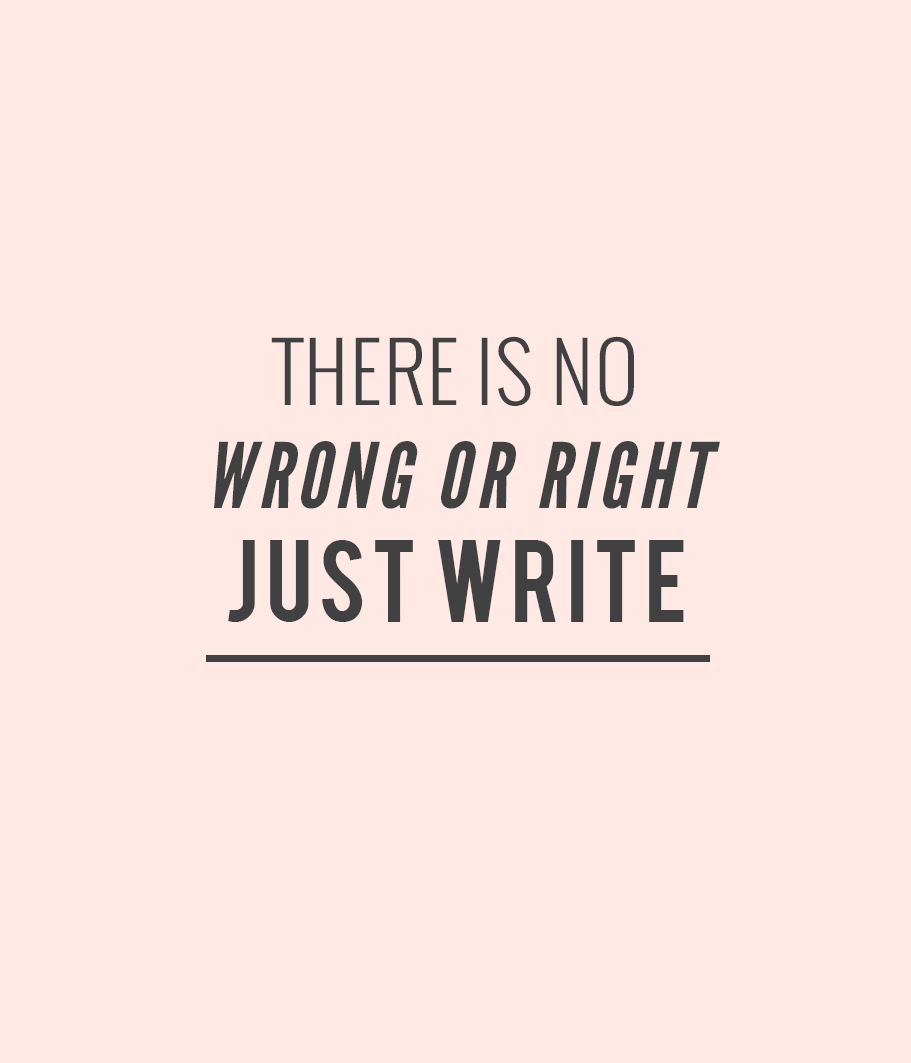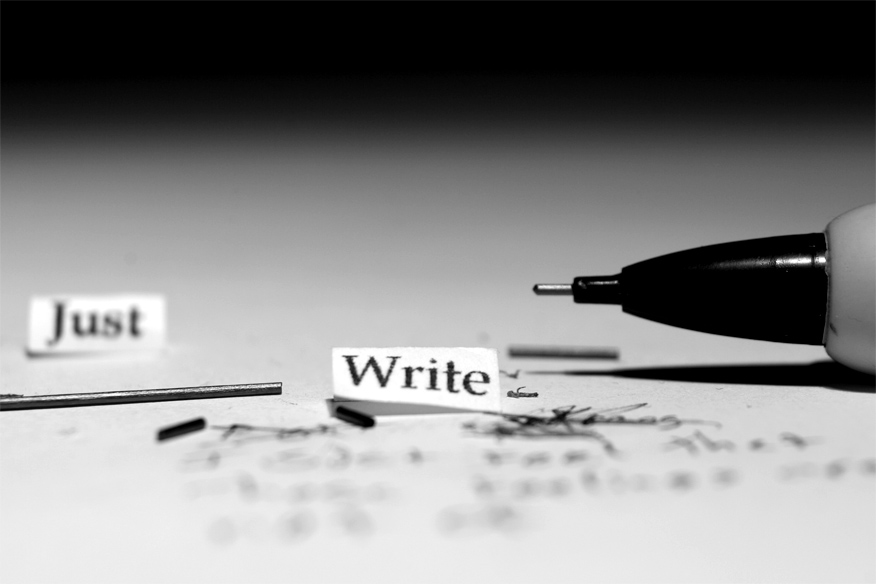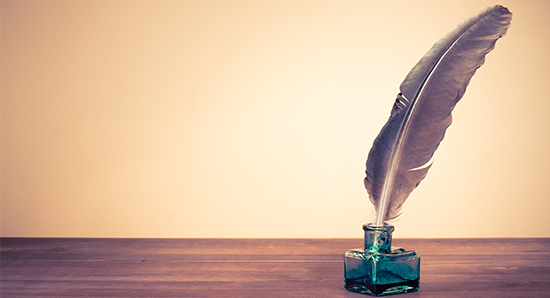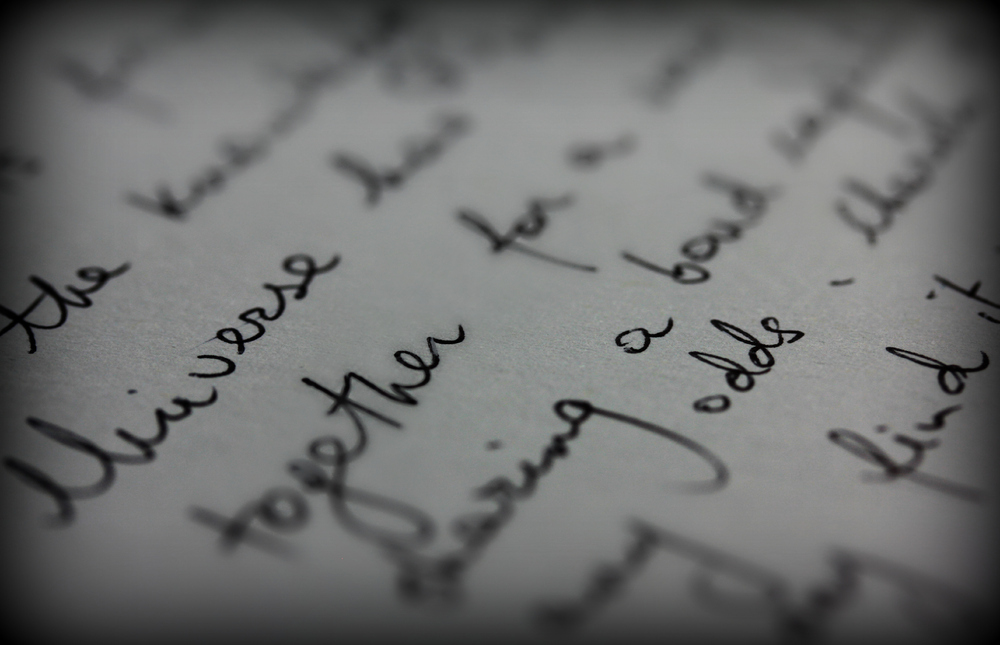A Walk through the Past of the City of Dreams:
My Memorable Experience at the Museum of the City of New York
Art is an expression, feeling, and emotion. I have been to a couple of museums during my senior year of high school and freshman year of college for my history and art classes. However, for a person like me who never pays too much attention towards art exhibitions, the attraction towards this exhibition was something magical, mystical and inexplicable.
The first focal point of the museum is the Starlight (Hanging Grid II) by Cooper Joseph Studio. It is installed above the rotunda, next to the circular staircase of the main entrance. The 5,283 points of lights that generates no heat is one of the most photographed feature of the museum shown in figure 1.
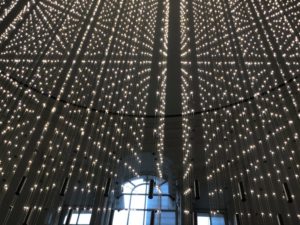
The first exhibit that I went to was the New York at its Core. It consists about 450 objects and images to showcases 400-year history of the five boroughs of the city. It the representation of the journey of a striving village on the periphery of the Dutch trading empire’s rise to one of the world’s most diverse and densely populated city. The room is divided into different sections as shown in figure 2, each section represents a specific era such as 1914 to 1929, New York Roars into the Twenties; 1941 to 1960, the Capital of the World; 1960 to 1970, Divided City; 1980 to 2001, New Immigrant City. All of them tell the story of money, diversity, creativity and density, and the stories of different generations, immigrants, politicians, dreamers, tycoons and ordinary New Yorkers. So, this exhibition highlights the rise of the “Capital of the World” through the stories of innovation, energy, struggle, economic and daily life. The final gallery of the exhibition called The Future City Lab provides visitors an insight of the future of the city and its issues. In this section, we participated by writing our own “What if” cards, where visitors ask a “what if” question and answer it on the back of the card. Through this activity people propose an idea about how things could be in the future, which I found very engaging and fascinating (figures 3). Also, the creation wall in the Future City Lab was very interesting, where visitors stand on a black circle on the floor and in front of them is a screen of the future city. So, visitors see themselves on the screen as in they’re in the future. Overall, the contemporary video, photography and interactive digital gadgets made the exploring experience easy and interesting.
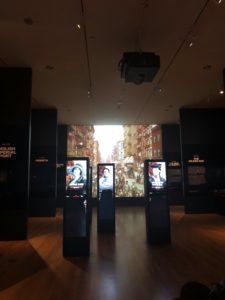
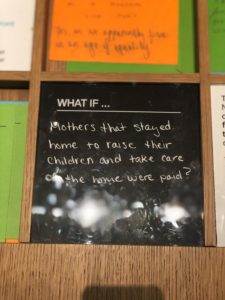
The second exhibition that I visited was called A City for Corduroy, Don Freeman’s New York. The artist Don Freeman created character, Corduroy was portrait as a stuffed bear in green overalls. His creation has been a delight to children for half a century through the humane depictions of New Yorkers and 1930s New York City. The exhibition has paintings, photographs, drawings, books, and the original sketches of Corduroy. The gallery’s walls are painted in blue, but full of lights which gave its warm color palette photographs and paintings life. Some the works are hung on the wall. Track and spot lighting are used to direct light at specific works while maintaining an overall level of lighting throughout the exhibit.
Finally, Germ City: Microbes and the Metropolis was the third exhibition that I explored. It shows the history of New York City’s battle against infectious diseases. It is a hybrid gallery and library. There are contemporary artworks as well as historical artifacts, some books and access to different perspectives on this issue through digital gadgets. It provides an overview of how New Yorkers had to fight through issues involving government, medical professionals, urban planners and businesses to develop an understanding of germs and diseases caused by them and how many people died because they didn’t know the treatment or how to tackle the diseases. The whole gallery is white with written history of the people vs germs on every wall as shown in figure 4. I found one part of the exhibition really interesting, where all the names of the diseases were listed along with the symptoms on the wall (figure 5). There was one artifact placed on the table of a woman’s face full of smallpox (figure 6). It was so realistic that it looked disgusting. Also, there is a room right outside of the main gallery, where the visitors are encouraged to write their reviews about the exhibition and hang them on the wall.
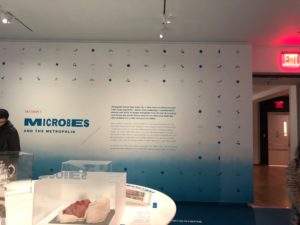
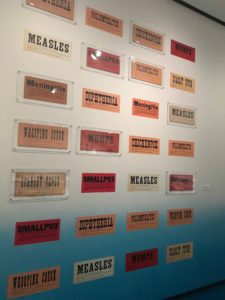
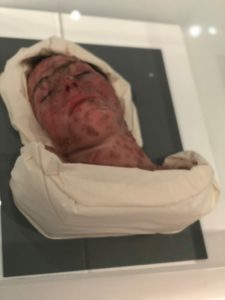
We also stopped by to look at Stanley Kubrick’s photo-gallery in the Through a Different Lens: Stanley Kubrick’s Photographs exhibition. All the photographs were in black and white. Some of the photos are showing the nightclubs, sports, and streets of New York City. There were about 120 photographs, highlighting the circus, wrestling, New Yorkers in the clubs, and on the streets.
Various factors work together to make the exhibition stand put more to the visitors. The lighting in an exhibition is essential to enhance the beauty of the exhibits. The role of lighting in an exhibition space contributes to the preservation of the artwork, complements the work and highlights the significant parts to the viewers. The creative lighting strategies were impressive. The lighting was dimmed in the New York at its Core, while bright lighting in A City for Corduroy, Don Freeman’s New York and Germ City: Microbes and the Metropolis. The galleries were white, black, red or in neutral colors. Contemporary art works, such as installation and artwork presentation using technology were the attraction of the exhibition.
From my visits in New York City’s museums, I realized that viewing an exhibition with and without adequate knowledge makes a difference. I didn’t do any research before going to this exhibition, so I went in with an open mind. It made me see things from a different perspective and analyze each exhibition, rather than knowing significance of each art and not relating with it. Also, I noticed that going unaccompanied and accompanied to a museum make a huge difference in how we see each exhibit. I went with two of my friends, so it was interesting to see how they interpret each art.
Knowing the history of the city that we live in is very important. Overall, after visiting the museum, I have a better understanding of NYC’s history and appreciate artwork a little bit more. Along with getting a glimpse into the past of NYC, I have experienced an unforgettable aesthetically pleasing exhibition and made some memories with friends.
